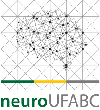Banca de DEFESA: LUANA DOS SANTOS DE OLIVEIRA
Uma banca de DEFESA de MESTRADO foi cadastrada pelo programa.STUDENT : LUANA DOS SANTOS DE OLIVEIRA
DATE: 09/01/2024
TIME: 14:00
LOCAL: https://conferenciaweb.rnp.br/sala/daniel-25
TITLE:
BIOMECHANICAL AND NEURAL ANALYSIS OF STEP INITIATION DURING COGNITIVE-MOTOR CONFLICT IN INDIVIDUALS WITH AND WITHOUT FREEZING OF GAIT IN PARKINSON'S DISEASE
PAGES: 50
BIG AREA: Ciências da Saúde
AREA: Fisioterapia e Terapia Ocupacional
SUMMARY:
Introduction: The step initiation process is particularly interesting for Parkinson’s disease (PD) because it combines cognitive and motor elements to prepare the movement (known as anticipatory postural adjustments, APA) and execute it (known as the step itself). Step initiation disorders in PD include hypokinetic (reduced scaling) and bradykinetic (abnormal timing) APAs. The fact that emotions, attention, and external triggers can alter this motor program from step initiation suggests that there is a complex pathophysiological mechanism that involves not only locomotor networks but also cortical areas and the basal ganglia system. Step initiation in PD is often affected by motor blocks (a subtype of the phenomenon known as Freezing of Gait, FoG). However, exactly which neural substrates are involved in this symptom is not yet known. The lack of a deeper understanding of the brain regions involved in cognitive-motor processing during ecological activities such as stepping makes interpretation difficult and, consequently, the development of more effective treatments. Objectives: To evaluate the biomechanical and hemodynamic response of both dorsolateral prefrontal cortices and the supplementary motor area during step initiation under cognitive-motor conflict in people with and without freezing of gait in Parkinson’s disease. Methods: 35 individuals diagnosed with idiopathic Parkinson’s disease (16 with FoG) and 17 neurologically healthy individuals participated in this study. Hemodynamic responses of the supplementary motor area (SMA) and dorsolateral prefrontal cortex (DLPFC) were assessed using functional near-infrared spectroscopy (fNIRS) during a step initiation task under cognitive-motor conflict to select the foot-to-step. step (congruent and incongruent conditions). The following variables were analyzed: (a) APA delay; (b) duration of the APA; (c) amplitude of the APA; (d) number of APAs; (e) number of errors in the task; and (f) first-level analysis (GLM beta values) related to step initiation for SMA and DLPFC. A two-way ANOVA was used with the data normalized: 3 (group: Control, DP FoG+, and DP FoG-) and 2 (condition: Congruent and Incongruent). For the analysis of interactions and differences found in the ANOVA test, the Bonferroni post hoc test will be used. The significance level for all analyses was 0.05. Statistical analyses were performed with the R program. Results: APA amplitude indicated a significant main effect of group, with DP FoG+ presenting lower values than healthy ones, and condition having lower values than the incongruent condition. The APA delay showed a significant main effect of group, with healthy individuals presenting lower values than DP FoG+ and DP FoG-, with these showing no differences between them; and condition, with the congruent condition having lower values than the incongruent condition. The analysis of oxy-Hb for SMA indicated a main effect of group, with higher values in the healthy group to PD FoG+; and condition, with the congruent condition presenting higher values than the incongruent condition. The analysis of oxy-Hb for DLPFC indicated a main effect of group, with higher values in the healthy group to DP FoG+ and DP FoG-, which did not differ from each other; and condition, with the congruent condition presenting lower values than the incongruent condition. Discussion: The biomechanical and hemodynamic response during step initiation was influenced by the complexity of the cognitive-motor task: (1) step initiation performance is impaired when the task requires greater inhibitory control, (2) greater participation of cortical areas prefrontal when the task requires greater inhibitory control. Individuals with PD exhibit worse biomechanical responses and reduced hemodynamic response during gait initiation than healthy individuals. This may reflect cortical and/or multiple pathway damage, with subsequent impaired use of cognitive and motor resources. Individuals with PD FoG+ exhibit a smaller hemodynamic response in the SMA during gait initiation, indicating that this area may be involved in freezing of gait.
COMMITTEE MEMBERS:
Presidente - Interno ao Programa - 2418537 - DANIEL BOARI COELHO
Membro Titular - Examinador(a) Externo à Instituição - LUIS MOCHIZUKI - USP
Membro Titular - Examinador(a) Externo à Instituição - FÁBIO AUGUSTO BARBIERI - UNESP
Membro Suplente - Examinador(a) Interno ao Programa - 1674604 - YOSSI ZANA
Membro Suplente - Examinador(a) Externo ao Programa - 1957691 - RONNY CALIXTO CARBONARI
Membro Suplente - Examinador(a) Externo à Instituição - CARLA DA SILVA BATISTA - EACH USP




